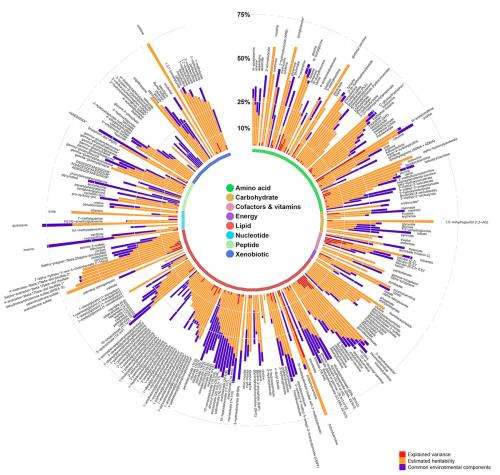Metabolic map of human body created

(Medical Xpress)—Weill Cornell Medical College in Qatar (WCMC-Q) scientists have drafted a metabolic map of the human body that shows how human metabolism works as a system, and how it can potentially be modified to treat disease. The map, published in Nature Genetics shows different pathways between genes, enzymes and metabolites, demonstrating that a drug used to target one gene may have several different effects—and consequences—on other pathways.
A single genetic difference in the way that an enzyme behaves may produce positive or negative effects. It may make someone prone to certain diseases, or protect them from some illnesses.
"This is an atlas of how everybody is metabolically different. We can now really understand the genetic part of human metabolism as a whole," said Dr. Karsten Suhre, a professor of physiology and biophysics at WCMC-Q, who worked with partners at European institutions to create the map.
"To treat a disease, such as diabetes or cancer, if you want to change the levels of a certain metabolite, the map would tell you which enzyme to target, but it would also tell you which other metabolites and enzymes surrounding the target would be affected, so that you can select the right combination of drugs in order to reach a desired effect," he said.
Some 7,824 people participated in the study, helping scientists to determine 2.1 million genetic variants in each participant. Through statistical analysis, scientists found that there are 145 genes that significantly affect the body's metabolic capacities.
"Many of the 145 genes we identified are enzymes. Enzymes are there to produce the different metabolites—sugars, fats and amino acids are the building blocks the body needs," Dr. Suhre said. "Genetically, everyone has these enzymes but no one is identical in what concerns their genetic makeup, so we're looking for differences in what an individual's enzymes can do by generating a comprehensive picture of over 400 metabolites for every blood sample we measure."
More information: Research paper: www.nature.com/ng/journal/v46/n6/full/ng.2982.html
















